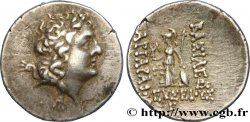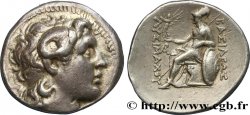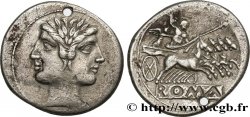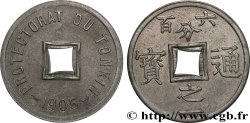E-auction 82-41225 - bgr_334079 - KAMPANIEN - NEAPOLIS Nomos ou didrachme
Sie müssen angeschlossen sein und von cgb.fr genehmigt werden, um in einer E-Auktion teilzunehmen.Melden Sie sich an, um zu wetten..Die Kontobestätigungen sind innerhalb von 48 Stunden nach Ihrer Anmeldung gemacht.Warten Sie nicht bis die letzten zwei Tage vor dem Abschluss eines Verkaufs, um Ihre Registrierung abzuschließen. Klickend "BIETEN" verpflichten Sie sich vertraglich, diesen Artikel zu kaufen und Sie nehmen ohne Reserve die allgemeinen Verkaufsbedingungen für den e-auctions zu cgb.fr an.
Der Verkauf wird an der Zeit auf der Übersichtsseite angezeigt geschlossen werden. Angebote, die nach der Schließung Zeit empfangen sind, werden nicht gültig.
Bitte beachten Sie, dass die Fristen für die Einreichung Ihres Angebots auf unsere Server können variieren und es kann zur Ablehnung Ihres Angebots entstehen, wenn es in den letzten Sekunden des Verkaufs gesendet wird. Die Angebote sollen mit ganzer Zahl ausgeführt sein, Sie können Kommas oder des Punktes in Ihrem Angebot nicht erfassen. Bei Fragen klicken Sie hier, um einen Blick auf die FAQ E-Auktionen.
KEINE ANSCHAFFUNGSKOSTEN FÜR DIE KÄUFER.
KEINE ANSCHAFFUNGSKOSTEN FÜR DIE KÄUFER.
| Schätzung : | 125 € |
| Preis : | 67 € |
| Höchstgebot : | 100 € |
| Verkaufsende : | 10 November 2014 15:02:00 |
| Bieter : | 4 Bieter |
Type : Nomos ou didrachme
Datum: c. 300-275 AC.
Name der Münzstätte / Stadt : Naples, Campanie
Metall : Silber
Durchmesser : 21 mm
Stempelstellung : 12 h.
Gewicht : 6,96 g.
Seltenheitsgrad : R2
Kommentare zum Erhaltungszustand:
Exemplaire sur un flan large et irrégulier bien centré à l’usure importante, identifiable. Patine de collection ancienne
N° im Nachschlagewerk :
Vorderseite
Beschreibung Vorderseite Tête de la nymphe Parthénopé ou Néapolis à droite, la chevelure bouclée, ceinte d’un bandeau avec collier et boucle d’oreille ; derrière la tête, un canthare.
Legende des Averses CA
Rückseite
Beschreibung Rückseite Taureau androcéphale passant à droite, la tête barbue de face, couronné par Niké volant à droite ; entre les pattes, une lettre.
Legende des Reverses : [NEOPOLITWN/ K]
Übersetzung der Rückseite (de Naples).
Kommentare
Poids léger. Pour ce type, le nom placé sous la tête de la nymphe doit plutôt être interprété comme un nom de magistrat monétaire plutôt que la signature d’un graveur particulier comme le signale N. K. Rutter (HN. italy, p. 70, n° 579 note). Le visage présente une attitude altière avec une chevelure très ornementée qui n’est pas sans rappeler les représentations syracusaines. Au droit, derrière la tête de la nymphe, nous avons la représentation d’un canthare. Les types napolitains sont probablement d’origine religieuse (agonistique). Au droit, la tête de la nymphe Parthénopé a donné son premier nom à la ville et est restée celui de son Acropole (citadelle). Cette élégante représentation féminine n’est pas sans rappeler les chef d’œuvres des graveurs syracusains comme Kimon et le fameux tétradrachme avec la tête d’Aréthuse de trois quarts de face (A. Evans, NC. 1891, pl. XI). En l’honneur de la nymphe Parthénopé, identifiée comme la déesse locale et éponyme de la cité de Neaopolis (Naples), des jeux annuels (agonisitiques) étaient donnés (Roscher, Lex. 1653). Au revers le taureau androcéphale pourrait bien être une représentation du dieu-rivière Achéloos (Achelaus). Cependant, à Naples, il est possible que les jeux agonistiques périodiques n’aient pas seulement été donnés en l’honneur d’Achéloos, le père de toutes les rivières. Le dieu-fleuve androcéphale, couronné par Niké qui se retrouve sur de nombreux monnayages campaniens pourrait aussi être identifié avec une divinité chtonique tauriforme sous la forme de Bacchus Hebon, dont le culte est particulièrement développé en Italie du Sud, en particulier en Campanie (Lenormant, La Grande Grèce, p. 420).
Lightweight. For this type, the name placed under the head of the nymph should rather be interpreted as the name of a monetary magistrate rather than the signature of a particular engraver as indicated by N. K. Rutter (HN. Italy, p. 70, no. 579 note). The face presents a haughty attitude with very ornamented hair which is reminiscent of Syracusan representations.. On the right, behind the nymph's head, we have the representation of a kantharus. The Neapolitan types are probably of religious (agonistic) origin. On the right, the head of the nymph Parthenope gave its first name to the city and remained that of its Acropolis (citadel). This elegant female representation is reminiscent of the masterpieces of Syracusan engravers such as Kimon and the famous tetradrachm with the head of Arethusa in three-quarter view (A. Evans, NC. 1891, pl. XI). In honor of the nymph Parthenope, identified as the local goddess and eponym of the city of Neaopolis (Naples), annual (agonisitic) games were given (Roscher, Lex. 1653). On the reverse, the man-headed bull could well be a representation of the river god Achelous (Achelaus). However, in Naples it is possible that the periodic agonistic games were not only given in honor of Achelous, the father of all rivers. The androcephalic river god, crowned by Nike, who is found on many Campanian coins, could also be identified with a tauriform chthonic divinity in the form of Bacchus Hebon, whose cult is particularly developed in southern Italy, especially in Campania (Lenormant, La Grande Grèce, p.. 420)
Lightweight. For this type, the name placed under the head of the nymph should rather be interpreted as the name of a monetary magistrate rather than the signature of a particular engraver as indicated by N. K. Rutter (HN. Italy, p. 70, no. 579 note). The face presents a haughty attitude with very ornamented hair which is reminiscent of Syracusan representations.. On the right, behind the nymph's head, we have the representation of a kantharus. The Neapolitan types are probably of religious (agonistic) origin. On the right, the head of the nymph Parthenope gave its first name to the city and remained that of its Acropolis (citadel). This elegant female representation is reminiscent of the masterpieces of Syracusan engravers such as Kimon and the famous tetradrachm with the head of Arethusa in three-quarter view (A. Evans, NC. 1891, pl. XI). In honor of the nymph Parthenope, identified as the local goddess and eponym of the city of Neaopolis (Naples), annual (agonisitic) games were given (Roscher, Lex. 1653). On the reverse, the man-headed bull could well be a representation of the river god Achelous (Achelaus). However, in Naples it is possible that the periodic agonistic games were not only given in honor of Achelous, the father of all rivers. The androcephalic river god, crowned by Nike, who is found on many Campanian coins, could also be identified with a tauriform chthonic divinity in the form of Bacchus Hebon, whose cult is particularly developed in southern Italy, especially in Campania (Lenormant, La Grande Grèce, p.. 420)







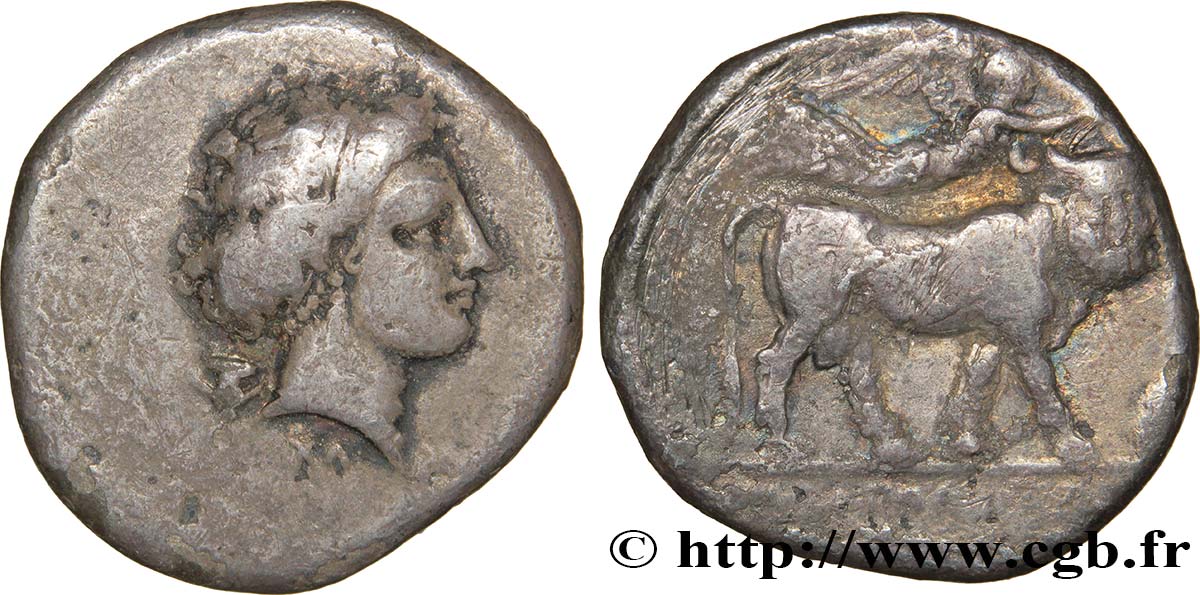
 Berichten über einen Fehler
Berichten über einen Fehler Die Seite drucken
Die Seite drucken Teilen meiner Auswahl
Teilen meiner Auswahl Stellen Sie eine Frage
Stellen Sie eine Frage Einlieferung/Verkauf
Einlieferung/Verkauf
 Details
Details





